“If I do not become a saint when I am young, I shall never become one.”
St John Berchman
St John Berchman
.jpeg/:/cr=t:0%25,l:0%25,w:100%25,h:100%25)
WE ARE ALTER SERVERS OF THE CATHOLIC DIOCESE OF AUCHI, AUCHI EDO STATE NIGERIA.
St John berchman
Nearer To God At The Altar
We love our customers, so feel free to visit during normal business hours.
Today | By Appointment |
Introduction to the sanctuary and life of a mass server's
Signs, Gestures And Reverence
What Is the Sacristy?
How to walk
When To Walk
Communion Plate, Paten.
Say something interesting about your business here.
What's something exciting your business offers? Say it here.

The following guidelines were prepared by the Committee on the Liturgy and presented to the National Conference of Catholic Bishops for discussion at the June 1994 Special Assembly on Thursday, June 16, 1994. The suggested guidelines have been slightly revised according to the third edition of the General Instruction of the Roman Missal.
The following guidelines were prepared by the Committee on the Liturgy and presented to the National Conference of Catholic Bishops for discussion at the June 1994 Special Assembly on Thursday, June 16, 1994. The suggested guidelines have been slightly revised according to the third edition of the General Instruction of the Roman Missal. They may be used as a basis for developing diocesan guidelines.
1. Although institution into the ministry of acolyte is reserved to lay men, the diocesan bishop may permit the liturgical functions of the instituted acolyte to be carried out by altar servers, men and women,boys and girls. Such persons may carry out all the functions listed in no. 100 (with the exception of the distribution of Holy Communion) and nos. 187 - 190 and no. 193 of
the General Instruction of the Roman Missal . The determination that women and girls may function as servers in the liturgy should be made by the bishop on the diocesan level so that there might be a uniform diocesan policy.
2. No distinction should be made between the functions carried out in the sanctuary by men and boys and those carried out by women and girls. The term "altar boys" should be replaced by "servers". The term "server" should be used for those who carry out the functions of the instituted acolyte.
3. Servers should be mature enough to understand their responsibilities and to carry them out well and with appropriate reverence. They should have already received holy communion for the first time and normally receive the Eucharist whenever they participate in the liturgy.
4. Servers should receive proper formation before they begin to function. The formation should include instruction on the Mass and its parts and their meaning, the various objects used in the liturgy (their names and use), and the various functions of the server during the Mass and other liturgical celebrations. Servers should also receive appropriate guidance on maintaining proper decorum and attire when serving Mass and other functions.
5. Since the role of server is integral to the normal celebration of the Mass, at least one server should assist the priest. On Sundays and other more important occasions, two or more servers should be employed to carry out the various functions normally entrusted to these ministers.
6. Acolytes, altar servers, readers, and other lay ministers may wear the alb or other suitable vesture or other appropriate or dignified clothing. ( General Instruction of the Roman Missal , no.339). All servers should wear the same liturgical vesture.
7. Servers carry the cross, the processional candles, hold the book for the priest celebrant when he is not at the altar, carry the incense and censer, present the bread, wine, and water to the priest during the preparation of the gifts or assist him when he receives the gifts from the people, wash the hands of the priest, assist the priest celebrant and deacon as necessary.
8. Servers respond to the prayers and dialogues of the priest along with the congregation. They also join in singing the hymns and other chants of the liturgy.
9. Servers should be seated in a place from which they can easily assist the priest celebrant and deacon. The place next to the priest is normally reserved for the deacon.
10. Servers may not distribute holy communion unless they have been mandated for this function by the bishop.
11. The Order for the Blessing of Altar Servers, Sacristans, Musicians, and Ushers ( Book of Blessings ,nos. 1847-1870) may be used before servers first begin to function in this ministry.

This history of the Catholic Church in the Diocese of Auchi dates back to the latter part of the 19th century when the first Roman Catholic Missionaries arrived at Agenebode in the present Etsako East Local Government Area of Edo State. Although, evidences abound of earlier contacts of the Christian missionaries with the indigenes of Agen
This history of the Catholic Church in the Diocese of Auchi dates back to the latter part of the 19th century when the first Roman Catholic Missionaries arrived at Agenebode in the present Etsako East Local Government Area of Edo State. Although, evidences abound of earlier contacts of the Christian missionaries with the indigenes of Agenebode and environs, the officially recorded date for this is 1884 when catholic priests started visiting Agenebode and environs from their then headquarters in Lokoja. Later on the missionary headquarters was moved from Lokoja to Asaba. Rt. Rev. Monsignor Carlos Zappa became the prefect of the upper Niger at that time in Asaba. As Prefect, Monsignor Zappa again successfully resumed evangelization works into the interior of Agenebode and its surrounding towns through the River Niger. In 1897, a parish was officially erected at Agenebode (the first parish in the Diocese) with Rev. Fr. Peter Piotin, SMA, as the first parish priest. From Agenebode, other parish stations were opened in Etsako; at Ivianokpodi, Iviukwe, Okpekpe and Apana. In 1908, he established the first Major Seminary in Nigeria, St. Martin's Seminary at Ivianokpodi. The seminary was later transferred to Asaba in 1927 by Bishop Broderick. Among the Seminarians who moved from the seminary at Ivianokpodi to Asaba was the late Rev. Fr. Paul Emechete, the first Nigeria Priest, and the late Rt. Rev. Monsignor Joseph Agbodio Erameh, a native of Anegbette in South Uneme Clan in present Etsako Central Local Government Area of Edo State.With the death of Bishop Broderick in 1933, Bishop Leo Taylor was appointed his successor in 1934. Bishop Taylor who came to Asaba/Benin Vicariate from Lagos where he was principal of St. Gregory's College, created Uzairue parish in 1935, with Fr. I. Healy, SMA, as its first Parish Priest. Bishop Taylor ordained the first Edo priest who was also the second indigenous priest of the Vicariate Apostolic of Western Nigeria in the person of the Late Rt. Rev. Monsignor Joseph Agbodio Erameh at Asaba, on December 20, 1936 and transferred the major seminary there to Benin City in 1938. Bishop Taylor was succeeded in Asaba/Benin Vicaiate by Bishop Patrick Joseph Kelly in the same year. With the unparalleded pastoral zeal of Bishop Kelly, the Catholic faith spread in the now Diocese of Auchi and other areas of the Benin Ecclesiastical province by leaps and bounds.In 1973, Bishop Kelly retired and handed over the then Diocese of Benin City to Bishop Patrick Ebosele Ekpu who was ordained Bishop in 1971 (now Archbishop Emeritus of Benin City). And 30 years after, the Diocese of Auchi was created from the Archdiocese of Benin City. The Catholic Church, during the episcopacy of Bishop P.J. Kelly established eight secondary schools in the area. Our Lady of Fatima College, Auchi; St. John's College, Fugar, St. Angela's Grammar School Uzairue, St. Peter's College, Agenebode, and St. Joseph's College, Otuo, St. Mary's Grammar School, Eme-ora, St. James Grammar School, Afuza and St. Aloysius Gonzaga Grammar School, Ososo. These institutions were taken over by the Government in 1973.The Mission also established a hospital, Notre Dame Hospital (now Sancta Maria Hospital) at Uzairue and a Medical Centre, Sancta Maria Medical Centre at Agenebode. The history of the Catholic Church in the Diocese of Auchi would not be complete without accounts of its spread to Akoko-Edo and Owan Local Government Areas of the Diocese. In contrast to the warm welcome which the early Catholic Missionaries received in Etsako areas, their experience in Akoko-Edo and Owan Local Government Areas was one of initial resistance, if not down-right hostility by the Church Missionary Society (the Anglican) which was the first Christian Mission to establish its presence in these areas. The relatively slow pace of conversion to the Catholic faith and of vocations to the catholic priesthood in the areas for a long time can be attributed, in part, to this historical fact.The first appearance of the Catholic Church in Akoko-Edo was recorded in Imoga in the early 20th century (c. 1911) and later in Igarra (c. 1916) through the Catholic missionaries based in Lokoja and Okene. Among the priests who came from Okene to plant the Catholic faith in Akoko-Edo were Rev. Fathers Keenan, Walsh, Felin, Mcfadden and Conboy. In 1954, St. John the Apostle's Parish, Igarra was created by Bishop Kelly, with Fr. Morris Maquire, SMA, as its first parish priest. For a long time, the whole of Akoko-Edo was one parish-St. John the Apostle's Parish, Igarra. In 1983, St. Anne's Parish, Ososo was created and in 2003, St. Peter's Parish, Ibillo was created by Most Rev. Dr. Gabriel Ghieakhomo Dunia. (The first in his Episcopacy). Other Nine (9) parishes and Ten (10) mass centres have been established by Bishop Gabriel Dunia since he became Bishop of the new Diocese of Auchi.In respect of Owan the Catholic faith came into the area from two directions, namely, Uzairue in Etsako and Uromi in Esan land. Records indicated that itinerant Catholic missionaries from Uzairue under Fr. Piotin passed through Ihievbe, Uokha to Otuo (all in Owan East) and returned through Igarra back to Uzairue about 1933. With regard to the Western area of Owan, the faith came through Ubiaja, Uromi and later, Ekpoma in 1955. Thus while all Catholic areas of Owan East were outstations of Holy Rosary Parish, Uzairue, those of the West were first under St. Anthony' Parish, Uromi and later under Mary the Queen Parish, Ekpoma.Between 1945 and 1947, attempts were made by the Catholic missionaries to establish a primary school at Afuze as a first step to establishing a church there. These attempts were strongly resisted by the Church Missionary Society (CMS). In 1948, a Catholic primary school was eventually established at Afuze-Emai. At present, there are three parishes and two mass centres in Owan: St. Joseph's at Eme-ora, St. Jude's at Afuze-emai, St. Thomas Moore, Sobe, St. Joseph mass centre Otuo and St. Patricks Mass centre, Ozalla, while St. Thomas Moore Parish, at Sobe was ceded to the Diocese of Auchi from Ondo Diocese in 2003; St. Mary's Catholic Girl's Grammar School at Eme-Ora was established in 1965, while St. James Catholic Grammar School, Afuze-Emai was established in 1969.The struggle for the Diocese of Auchi actually began in the early 1980s. Year in, year out the sons and daughters waited patiently for this gift to their land, but to no avail until finally on the 4th of December, 2002, the news came: Auchi Diocese created and Gabriel Ghieakhomo Dunia, its first Bishop. It was a joyful news not just because of the long expectation of it, but because with the church “nearer home� evangelization will continue to be closer and made abundantly within the reach of the people more than ever before. And so it has been since then.Geopolitically, the Diocese covers the six Local Government Areas of Edo North senatorial district, namely Etsako West, Etsako Central, Etsako East, Owan West, Owan East and Akoko-Edo Local Government Areas of Edo State.
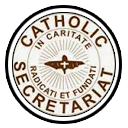 Catholic Secreteriat of Nigeria
Catholic Secreteriat of Nigeria Catholic News Service of Nigeria
Catholic News Service of Nigeria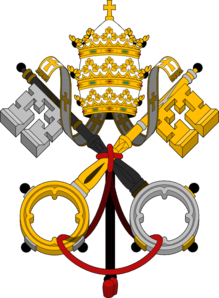 Vatican Website
Vatican Website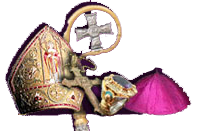 Catholic Bishop Conference of Nigeria
Catholic Bishop Conference of Nigeria SECAM
SECAM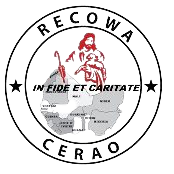 RECOWA
RECOWA Catholic Secreteriat of Nigeria
Catholic Secreteriat of Nigeria Catholic News Service of Nigeria
Catholic News Service of Nigeria Vatican Website
Vatican Website Catholic Bishop Conference of Nigeria
Catholic Bishop Conference of Nigeria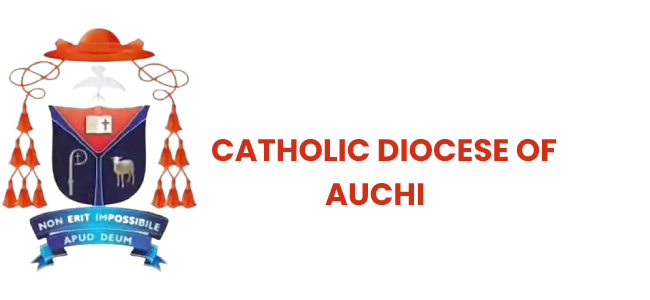 The Diocese history of Auchi dates back to the latter part of the 19th century when the first Roman Catholic Missionaries arrived at Agenebode in the present Etsako East Local Government Area of Edo State. Although, evidences abound of earlier contacts of the Christian missionaries with the indigenes of Agenebode and environs, the officially recorded date for this is 1884 when catholic priests started visiting Agenebode and environs from their then headquarters in Lokoja.
The Diocese history of Auchi dates back to the latter part of the 19th century when the first Roman Catholic Missionaries arrived at Agenebode in the present Etsako East Local Government Area of Edo State. Although, evidences abound of earlier contacts of the Christian missionaries with the indigenes of Agenebode and environs, the officially recorded date for this is 1884 when catholic priests started visiting Agenebode and environs from their then headquarters in Lokoja.
© 2023 The Catholic Diocese of Auchi.

An altar server is a lay assistant to a member of the clergy during a Christian liturgy. An altar server attends to supporting tasks at the altar such as fetching and carrying, ringing the altar bell, helps bring up the gifts, brings up the book, among other things. If young, the server is commonly called an altar boy or altar girl. In so
An altar server is a lay assistant to a member of the clergy during a Christian liturgy. An altar server attends to supporting tasks at the altar such as fetching and carrying, ringing the altar bell, helps bring up the gifts, brings up the book, among other things. If young, the server is commonly called an altar boy or altar girl. In some Christian denominations, altar servers are known as acolytes.[1]
While the function of altar server is commonly associated with children, it can be and is carried out by people of any age or dignity.[2]
A according to the General Instruction of the Roman Missal, "Mass should not be celebrated without a minister, or at least one of the faithful, except for a just and reasonable cause."[3]
As in other churches,[4][5] altar servers are sometimes called acolytes in the Latin Church.[6][7] Pope Benedict XVI spoke of Saint Tarcisius as "presumably an acolyte, that is, an altar server".[8] However, within the Latin Church, the term "acolyte" is also used in a more restricted sense, often specified as "instituted acolyte",[9] to mean an adult woman or man who has received the instituted ministry of that name.[10][11] Acolytes in this narrower sense are not necessarily preparing for ordination as deacons and priests.[12] They are authorized to carry out some functions, in particular that of cleansing the Eucharistic vessels, that are not entrusted to ordinary servers.[13] Those who are to be ordained to the diaconate must be instituted as acolytes at least six months previously.[14] This ministry was long classified in the Latin Church as a minor order, as by the Council of Trent.[15][16] The General Instruction of the Roman Missal, which does not use the term "server" and instead speaks of altar servers generically among "other ministers", treats in detail of the functions of the "acolyte", often specifying "instituted acolyte".[17]
Female Altar Server's
The 1983 Code of Canon Law altered the juridical situation: without distinguishing between male and female, it declared: "Lay persons can fulfill the function of lector in liturgical actions by temporary designation. All lay persons can also perform the functions of commentator or cantor, or other functions, according to the norm of law."[18] On 30 June 1992, the Pontifical Council for the Interpretation of Legislative Texts issued an authentic interpretation of that canon declaring that service of the altar is one of the "other functions" open to lay persons in general, without distinguishing between male and female.[19]
In reference to this authentic interpretation, the Congregation for Divine Worship and the Discipline of the Sacraments sent on 15 March 1994 a circular letter to presidents of episcopal conferences, clarifying that the canon in question is only of permissive character. It does not require the use of female altar servers. It is thus for each diocesan bishop to decide whether to allow them in his diocese.[20] A later document, from 2001, states that, even if a bishop permits female altar servers, the priest in charge of a church in that diocese is not obliged to recruit them, since nobody, male or female, has a right to become an altar server. The document also states that "it will always be very appropriate to follow the noble tradition of having boys serve at the altar".[21]
As priests in charge of churches are not obliged to avail of a diocesan bishop's permission in this matter, those belonging to traditionalist Catholic groups such as the FSSP, Institute of Christ the King, FSSPX and the CMRI and some other priests do not.
In the United States, after the Arlington Diocese's decision to allow them, the Diocese of Lincoln, Nebraska became the only diocese in the country that did not allow females to be altar servers in 2006,[22] after the only other holdout ended its prohibition on female altar servers.[23] However, it was joined by a church in the Diocese of Phoenix in August 2011, when it was announced that girls would no longer be allowed to altar serve.[24]
The vestment common to all ordained and instituted ministers of whatever rank is an alb, which is to be tied at the waist with a cincture unless the alb is made to fit without cincture.[44] Acolytes, readers and other lay ministers (such as altar servers) may wear either an alb or other appropriate attire as determined by the local episcopal conference.[45]
Servers often wear cassock and surplice, with black and red being the most common colors for a server's cassock.[46]
Get 10% off your first purchase when you sign up for our newsletter!
Copyright © 2023 Casanauchi - All Rights Reserved.
Powered by Martony